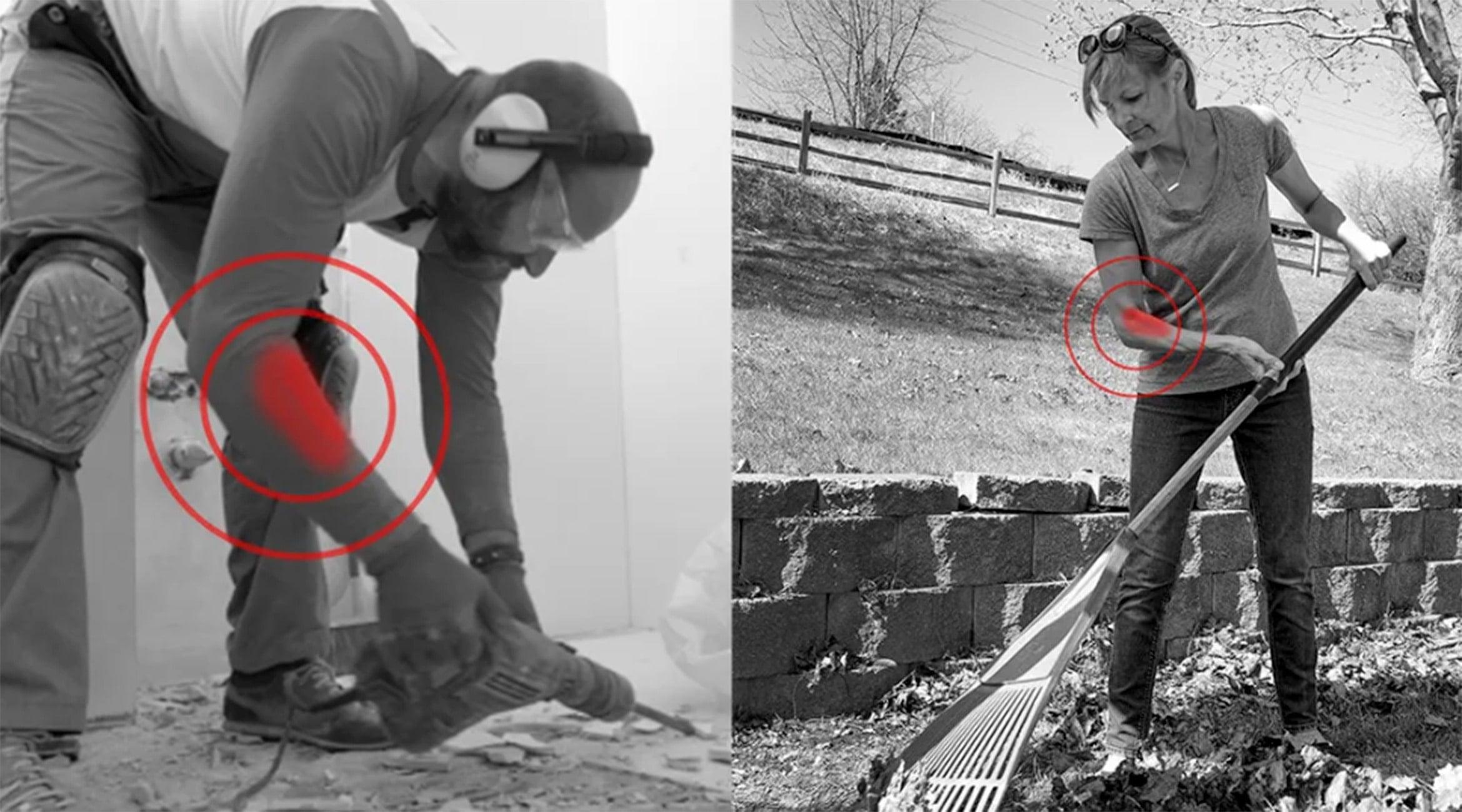So who gets tennis elbow and why?
Tennis elbow causes and symptoms
Also known as lateral epicondylitis, tennis elbow occurs when repetitive motions of the wrist and arm aggravate and inflame the tendons in the elbow. These tendons extend and stabilize the wrist, and anchor the muscles to the bones. The extensor carpi radialis brevis (ECRB) tendon and muscle can be weakened from overuse, leading to microscopic tears where the tendon attaches to the lateral epicondyle, which is the bony bump at the distal end of the humerus (upper arm bone).As the elbow bends and extends, the muscle rubs against this bony bump, causing wear and tear over time. It most often occurs in the dominant arm.
Initial mild discomfort gradually can worsen to recurring pain radiating from the elbow down the forearm. Other symptoms include:
- Dull ache at rest
- Difficulty grasping or lifting objects
- Weak grip strength
- Sharp twinges during and after using the wrist
- Numbness or tingling in the fingers
At-Risk Populations for Repetitive Motion Tennis Elbow
Tennis elbow is most common in those ages 40-60, but also can impact children and senior citizens. Men and women are equally likely to be diagnosed.
Particularly susceptible are people who perform repetitive arm movements, which can lead to overuse, which is typically defined as a high activity level, three or more times weekly, for 30 minutes or longer each time.
Consider that most people who get tennis elbow are not racquet sport enthusiasts, but instead are those whose jobs and hobbies require them to perform repetitive movement with their arms and forearms, often with twisting and bending, for hours at a time. This includes:
- Professional or recreational athletes – Baseball pitchers, golfers, football players, weight lifters and discus and javelin throwers
- Manual laborers – Manufacturing workers, mechanics, carpenters, painters, plumbers, landscapers, cooks, butchers, bricklayers, hairdressers, barbers
- Computer users – Gamers, typists, data entry workers, coders or others who work all day using a keyboard
- DIY-ers – Weekend warriors who tackle home repair or improvement projects on their own
- Musicians and crafters – Those who use musical instruments, scrapbookers, knitters, crocheters and more
Prevention and treatment
While rest is a first-line treatment for tennis elbow caused by repetitive motion, it isn’t always practical for people who must continue to perform their work, even with all the repetition. Practical prevention tips include:Stretch before activities that involve repetitive motion
Keep the wrist in as neutral a position as possible
Maintain good form when executing movements, particularly in sports. Learn proper form to prevent biker's elbow
Make movements smooth and controlled, not jerky
Use power tools rather than hand tools where possible
Choose hand tools with a padded grip
Use an ergonomic keyboard and mouse
Take periodic breaks
As for treatment, it’s important to not simply mask the symptoms, such as wearing a brace or strap, which only provide temporary pain relief, but to address the root cause.
One effective option is physical therapy, using instrument-assisted soft tissue mobilization (IASTM). This applies controlled microtrauma to the tendon to stimulate a local inflammatory response, which boosts circulation, sends healing cells and oxygen and breaks down adhesions, scar tissue and fascial restrictions.
The new E5 tendonitis recovery device from Stā Active replicates IASTM with a convenient, at-home treatment of 10 minutes per day, three times per week for eight weeks. Combined with strength and stretching exercises, this therapy promotes functional restoration.



Share:
What Upper-Body Exercises Can I Do with Tennis Elbow?
How Much Does Tennis Elbow Treatment Cost?